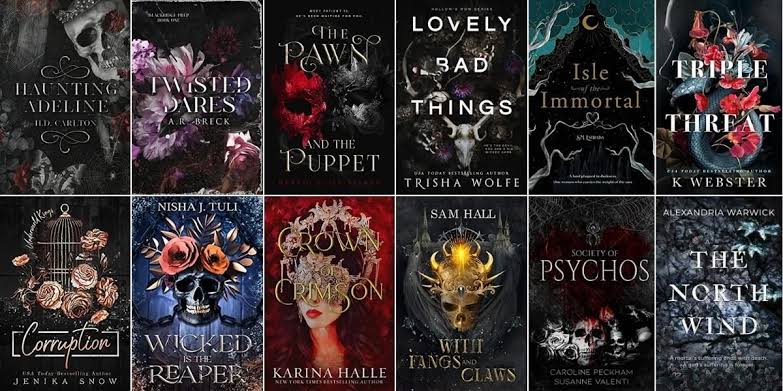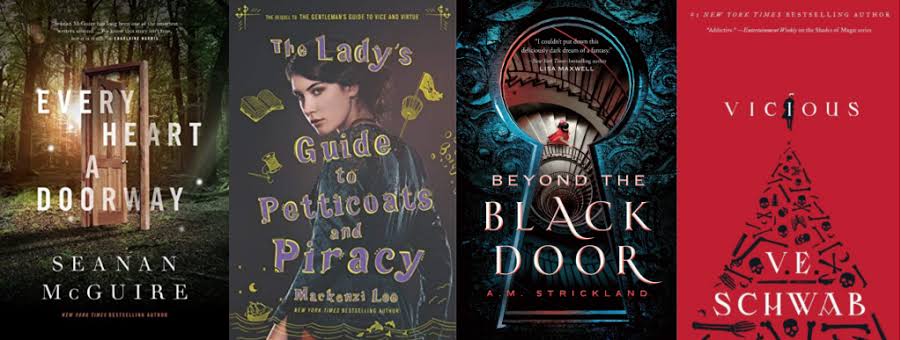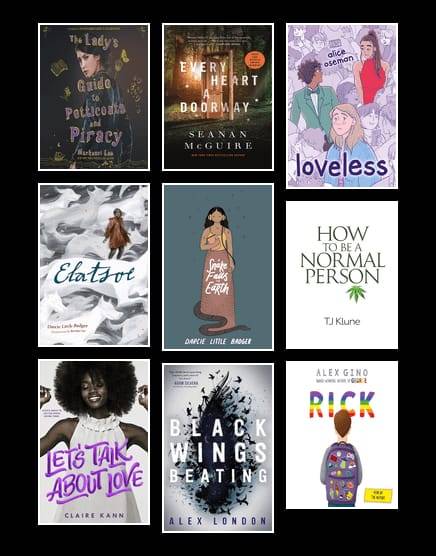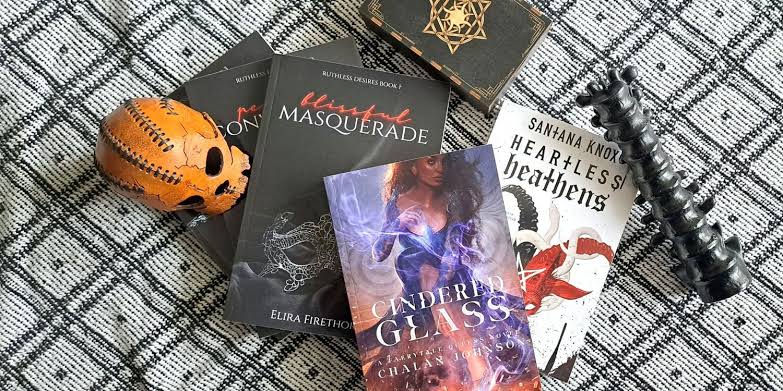In the ever changing world of literature, the genre of romance has come out as a powerful reflection of societal attitudes towards love and relationships. Traditionally, romance novels stuck to a narrow set of conventions, often featuring heterosexual, monogamous couples as protagonists. However, as readers become more aligned to the diverse assortments of human experience, they are demanding stories that reflect the full spectrum of love and romance.
Non-traditional romances have the power to challenge established stereotypes and preconceptions about love and relationships. By depicting relationships that defy societal norms, authors are pushing readers to question their assumptions and broaden their understanding of what constitutes a fulfilling romantic partnership. Through exposure to diverse narratives, readers are encouraged to confront their biases and embrace a more inclusive worldview.
One of the most significant shifts in romance literature is the growing recognition and celebration of diverse perspectives and experiences. Authors are increasingly exploring themes such as LGBTQ+ relationships, darker romance, and non-binary identities, reflecting the rich diversity of human relationships. This broadening of perspectives allows readers to see themselves represented in the stories they read, bringing a sense of validation and belonging.
Reading about non-traditional romances can promote empathy and understanding by allowing readers to settle in the lives of characters whose experiences may differ from their own. Through the exploration of diverse narratives, readers gain insight into the challenges and wins of individuals navigating unconventional relationships. This increased empathy has the potential to translate into real-world acceptance and support for diverse communities.
This article explores how readers are reshaping the genre by embracing non-traditional romances and pushing for greater non discrimination in storytelling. Some of the non-conventional romances that people are increasingly opening up to include:
Queer and non-binary relationships
Once downgraded to the sidelines or portrayed through harmful stereotypes, queer characters are now taking center stage in literature with the diversity of human experience. Historically, LGBTQ+ characters were often marginalized or lowered to token roles in literature, if they were represented at all. However, as society has become more accepting and understanding of diverse sexual orientations and gender identities, readers have begun to demand authentic and nuanced portrayals of queer characters. Authors are responding by creating stories that celebrate the richness and complexity of queer experiences, challenging stereotypes and providing representation for readers who may see themselves reflected in these characters.
Representation matters. Seeing oneself reflected in literature can be a powerful and announcing experience for readers, particularly those who identify as LGBTQ+. Queer characters serve as mirrors for readers to see their own struggles, successes, and identities validated on the page. This visibility not only holds a sense of belonging and acceptance but also helps to fight feelings of isolation.
Through true storytelling, authors demolish harmful myths and misconceptions surrounding LGBTQ+ identities, portraying queer characters as diverse and multifaceted individuals with agency and depth. This representation encourages readers to question their own biases and assumptions, leading to greater acceptance and respect for LGBTQ+ individuals.
Queer authors are gaining recognition and acclaim for their contributions to the literary world, and readers are actively seeking out books that center on queer themes and characters. This surge in queer literature reflects a growing demand for diverse stories and voices within the literary world.
Some books that caters to the same are:
Call Me by Your Name by André Aciman, 2007
The Seven Husbands of Evelyn Hugo by Taylor Jenkins Reid, 2017
Red, White & Royal Blue
Casey McQuiston, 2019
Exploring darker themes
Traditionally, literature has often shied away from exploring darker aspects of the human experience, opting instead for more conventional narratives. However, as societal norms evolve and conversations surrounding consent, power dynamics, and mental health gain importance, readers are drawn to stories that confront these taboo subjects head-on. Authors are delving into darker and more challenging themes, pushing the boundaries of traditional storytelling.
One of the driving forces behind the acceptance of darker themes in literature is the allure of complexity. Readers are drawn to stories that challenge their perceptions and evoke thought, searching out narratives that delve into the depths of human emotion and behavior. By exploring darker themes, authors are able to create multi-dimensional characters and plotlines that relate with readers on a deeper level and dialogue about the complexities of the human condition.
Central to the exploration of darker themes in literature is the concept of moral ambiguity. Characters are often depicted grappling with difficult decisions and ethical dilemmas, blurring the lines between right and wrong. Through these narratives, readers are faced with the complexities of human morality, prompting them to question their own beliefs and assumptions about what is acceptable or justifiable.
The acceptance of darker themes in literature reflects a broader cultural shift towards openness and transparency about difficult topics. By inviting themselves with these narratives, readers are encouraged to engage in meaningful conversations about consent, power dynamics, and mental health. Literature serves as a platform to explore complex issues and challenge societal norms in a safe and constructive environment.
For individuals who have experienced trauma or adversity, facing narratives that explore darker themes can provide a sense of validation for their own experiences. Seeing their struggles reflected in literature can help individuals feel less alone and isolated in their pain, knowing that others have walked similar paths and emerged on the other side. This validation can be incredibly empowering, affirming the validity of their emotions and experiences.
Engaging with darker themes in literature can offer a cathartic release for individuals grappling with unresolved emotions or trauma. Through the emotional connection with characters and narratives, readers are able to process their own feelings in a safe and controlled environment. By witnessing characters confront and overcome hardships, readers may find inspiration and hope for their own journey towards healing and resilience.Darker themes in literature have the power to provide comfort, validation, and healing for individuals coping with trauma and mental health challenges. By engaging with narratives that explore the depths of human experience, readers may find empowerment, and a renewed sense of hope. As literature continues to serve as the light in the darkness, it reminds us that even in our darkest moments, we are never truly alone.
Grave Love by Audrey Rush
Asking for it duet by Lilah Pace
Vicious by L.J Shen
Cat and mouse duet by H.D Carlton
Polyamory
Modern romance literature is embracing diverse representations of love and relationships, including polyamory, open relationships, and other forms of consensual non-monogamy. Authors are recognizing the complexity of these relationship dynamics, portraying characters who navigate multiple romantic connections with depth and authenticity. By showcasing the diversity of human experiences, these narratives resonate with readers who may identify with non-monogamous relationships or seek to understand them better.
The portrayal of non-monogamous relationships in romance literature challenges traditional norms and stereotypes surrounding love and commitment. These narratives throw into disorder the idealized notion of monogamy as the only valid form of romantic partnership and pull in readers to question societal expectations. By depicting characters who make meaningful connections outside of traditional boundaries, authors encourage readers to reconsider their assumptions about what constitutes a fulfilling relationship.
Non-monogamous relationships offer rich storytelling opportunities for exploring complex character dynamics. Authors delve into the complications of jealousy, communication, and emotional intimacy within these relationships, creating narratives that are both appealing and thought-provoking. By portraying characters who grapple with the challenges and rewards of loving more than one person, authors capture the differential realities of non-monogamous dynamics and invite readers to empathize with their experiences.
The portrayal of non-monogamous relationships in romance literature reflects broader cultural shifts towards openness and acceptance of diverse relationship structures. As societal attitudes towards love, sex, and commitment continue to evolve, readers are increasingly seeking out stories that reflect their own experiences and aspirations. Romance literature serves as a reflection of contemporary culture, capturing the heart of changing narratives.
For readers who may be exploring or considering non-monogamous relationships in their own lives, seeing their experiences reflected in literature can be empowering. These narratives provide validation and affirmation for readers who may feel marginalized or misunderstood by mainstream representations of love and romance. By portraying characters who navigate non-monogamous dynamics with autonomy, authors empower readers to embrace their own desires and boundaries in their relationships.
Engaging with narratives that feature non-monogamous relationships creates talk and understanding around alternative relationship structures. By portraying these relationships with empathy and authenticity, authors challenge stigma and misconceptions, opening the door to conversations about love, intimacy, and consent. Through literature, readers gain insight into the diverse ways in which people experience and express love, creating greater empathy and acceptance for all forms of consensual relationships.
Engaging with narratives that feature non-monogamous relationships can affirm readers’ autonomy and agency in their own romantic lives. Fictional characters who assert their desires and boundaries within non-monogamous dynamics serve as powerful examples of self-determination and empowerment. By witnessing characters navigate relationships on their own terms, readers may feel empowered to assert their own needs and boundaries in their personal relationships.
Some of the books that could resonate with these themes would be:
Briar Valley series by J.Rose
Sabre Security series by J. Rose
Lilac by B.B Reid
The Royals of Forsyth University series by Samantha Rue and Angel Lawson
Asexual and aromantic relationships
For too long, the narratives of asexual and aromantic individuals have been overshadowed by conventional romantic tropes. However, a new wave of fiction is challenging this status quo, offering rich and refined portrayals of asexuality and aromanticism that defy stereotypes and embrace diversity.
At the heart of these narratives lies a fundamental reconstruction of what it means to experience love and intimacy. Rather than sticking to traditional notions of romance, stories featuring asexual and aromantic leads delve into the complexities of human connection in all its forms. From deep platonic bonds to unconventional relationships, these stories celebrate the plethora of ways in which individuals make meaningful connections outside the confined boxes of romantic attraction
One of the most compelling aspects of this forthcoming genre is its emphasis on self-discovery. Far from being defined solely by their lack of sexual or romantic interest, asexual and aromantic characters are portrayed as individuals with their own desires, passions, and aspirations. Their journeys of self-acceptance and empowerment serve as powerful reminders of the importance of embracing one’s authentic self, regardless of societal expectations.
Moreover, by centering asexual and aromantic experiences in fiction, authors are challenging mainstream perceptions of what constitutes a “normal” or “valid” relationship. In doing so, they are not only providing much-needed representation for undervalued communities but also fueling important conversations about consent, autonomy, and the diverse ways in which people navigate intimacy.
However, while the rise of asexual and aromantic representation in fiction is undeniably a step in the right direction, it is not without its challenges. Authors must navigate a delicate balance between authenticity and accessibility, ensuring that their portrayals are both accurate and relatable to readers of all backgrounds. Additionally, they must confront the stereotypes and misconceptions that continue to surround asexuality and aromanticism.
Some books delving into the topic could be:
The Summer of Bitter and Sweet by Jen Ferguson
Sawkill Girls by Claire Legrand
Love Letters for Joy by Melissa See
Summer of Salt by Katrina Leno
These narratives challenge us to rethink what it means to find connection and fulfillment, inviting us to hold love in all its forms. From unconventional pairings that defy cultural or religious expectations to relationships that blossom through adversity, these stories show the resilience and beauty of the human spirit. By celebrating non-traditional romances, we not only affirm the validity of diverse love stories but also advocate for a more inclusive society where everyone’s right to love and be loved is respected. In recognizing and honoring these narratives, we make the way for a future where love knows no boundaries and where every individual can find acceptance and belonging, regardless of who they love or how they love.




